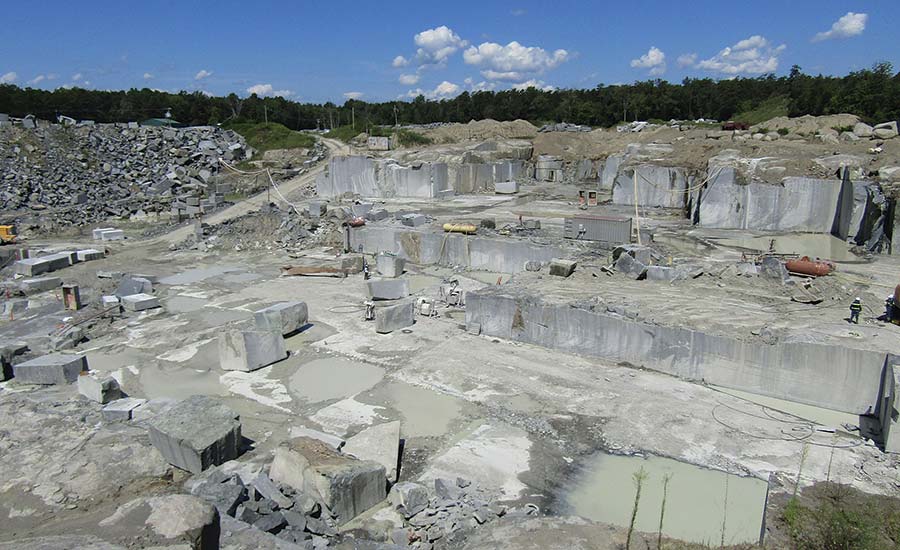Travelling Via Granite Quarries in South Africa: A Visual Odyssey
Travelling Via Granite Quarries in South Africa: A Visual Odyssey
Blog Article
Unveiling the Mysteries of Granite Quarrying: Where Stamina and Sophistication Meet
The globe of granite quarrying is a world where the raw strength of nature converges with human creativity to develop frameworks that stand the examination of time with an air of elegance. From the depths of quarries to the precise sprucing up in workshops, the procedure of changing granite right into architectural marvels is a complex dance of custom and advancement. As we peer right into the midsts of this old craft, we begin to discover the concealed ins and outs that form the really significance of our constructed setting.
The Beginnings of Granite Quarrying
In the record of building background, the beginnings of granite quarrying are shrouded in a tapestry of old workmanship and geological wonders. Going back to ancient Egypt and Mesopotamia, the extraction of granite from quarries marked the beginning of a journey that would eventually lead to the creation of some of the globe's most iconic frameworks.
Granite quarrying's roots can be mapped to the skilled craftsmens that recognized the stone's toughness and aesthetic appeal. Through a combination of primitive tools and large resolution, these very early quarry employees uncovered granite blocks that would certainly end up being the foundation of worlds.
As people progressed, so did the methods of quarrying granite. The Romans, renowned for their engineering prowess, created sophisticated techniques for extracting granite to create monoliths, temples, and roads that stood the examination of time.
The tradition of these ancient quarrying techniques proceeds to shape modern-day design, with granite remaining a symbol of stamina and beauty in construction tasks around the globe. (granite quarries in south africa)
Tools of the Quarrying Trade
The evolution of granite quarrying techniques from old worlds to modern times highlights the essential function played by the tools of the quarrying profession in shaping the sector's methods. In old times, quarrying tools were rudimentary, commonly containing knives, hammers, and wedges made from materials like bronze or iron. These devices required substantial manpower and time to remove granite blocks from quarries.

In addition, the intro of pneumatically-driven devices and high-powered equipment has considerably decreased the physical labor needed in quarrying operations, enhancing employee safety and security and efficiency. As the quarrying market remains to innovate, the devices of the profession stay at the leading edge of driving progress and forming the future of granite removal.
Drawing Out Blocks of Granite
Using precision equipment and progressed methods, the extraction of granite obstructs from quarries has become a sophisticated procedure see this here in the like this contemporary quarrying industry. The first action includes identifying the area and size of the granite deposit to establish one of the most efficient removal technique. Once an ideal website is selected, the removal process starts with the boring of holes for the positioning of explosives. Regulated blasting techniques are after that employed to damage apart the granite into convenient sections.

Sprucing Up and Completing Techniques
To accomplish a flawless surface on granite blocks, proficient artisans employ a collection of thorough polishing and ending up strategies. After the initial removal and forming procedures, the granite blocks go through a detailed polishing phase to improve their all-natural elegance and resilience.
In addition to polishing, finishing techniques are used to more fine-tune the granite's appearance. By thoroughly selecting and applying these brightening and ending up methods, artisans can transform raw granite blocks into beautiful items that display both stamina and beauty.

Ecological Impact and Sustainability
With the growing focus on ecological awareness in the sector, granite quarrying techniques are increasingly scrutinized for their effect on natural resources and long-lasting sustainability. Furthermore, the transport of granite from quarries to refining centers creates carbon exhausts, better adding to ecological destruction.
To minimize these impacts and ensure sustainability in granite quarrying, industry stakeholders are taking on different procedures. Executing advanced modern technologies to lower power usage and water use, reclaiming quarried land for ecological reconstruction, and promoting responsible sourcing practices are some techniques being used. Qualifications such as the Forest Stewardship Council (FSC) and the Management in Power and Environmental Design (LEED) assistance customers identify eco friendly granite products.
Conclusion
Finally, granite quarrying is a process that needs specialized devices and methods to essence blocks of granite and brighten them to a high degree of coating. While the ecological impact of quarrying can be substantial, initiatives are being made to boost sustainability methods in the market. In general, granite quarrying is a delicate balance in between taking advantage of the stamina and style of this link natural rock while decreasing its effect on the setting.
Report this page